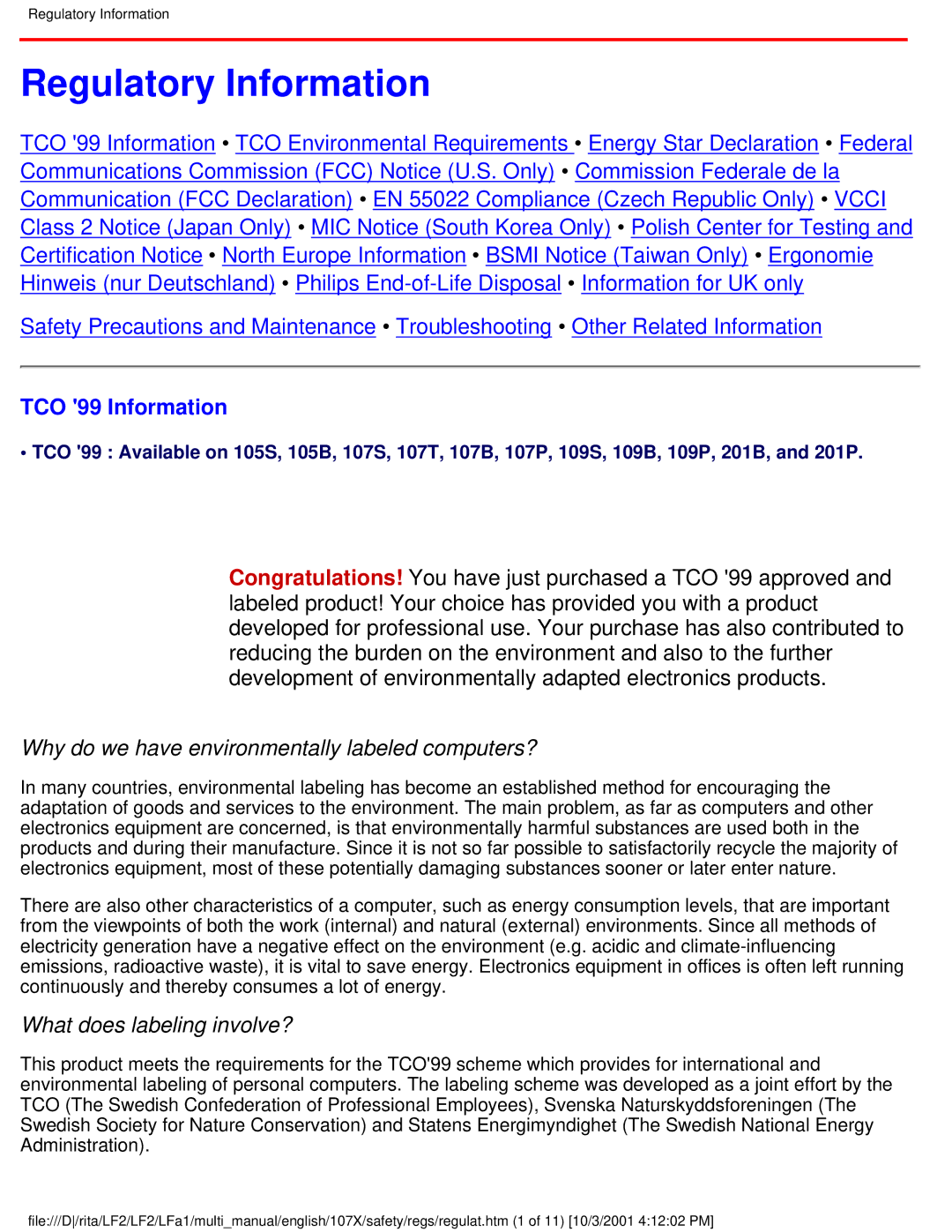107S2x, 109S2x, 107B2x, 107B3x, 107T2x specifications
Philips has long been a prominent player in the display technology market, and their series of monitors, including the Philips 109B2x, 107X2x, 107P2x, 107T2x, and 107B3x, showcase the brand's commitment to delivering high-quality visual experiences. These monitors are designed to meet a variety of needs, from casual home use to professional settings requiring precise color accuracy and reliability.The Philips 109B2x is distinguished by its sharp image quality and energy-efficient design. It features a 19-inch display with a crisp resolution that enhances productivity and provides a comfortable viewing experience. One of its standout technologies is the SmartContrast feature, which automatically adjusts the contrast based on the content being displayed, ensuring optimal clarity and depth of color.
In contrast, the Philips 107X2x is tailored for multimedia applications, offering vibrant colors and wide viewing angles. This model comes equipped with advanced color enhancement technologies, allowing users to enjoy films and games with breathtaking visuals. The monitor supports multiple connectivity options, making it easy to connect to a variety of devices, from laptops to gaming consoles.
The Philips 107P2x introduces touch capabilities, elevating the interactive experience. This model is ideal for professional environments where collaboration and engagement are paramount. The touch screen responds accurately to gestures, making it suitable for presentations and interactive applications.
Similarly, the Philips 107T2x is designed for touch functionality but with an added emphasis on ruggedness and durability. This model is perfect for educational institutions and public venues where frequent use is expected. Its sturdy build and scratch-resistant surface ensure longevity while maintaining high-quality performance.
Lastly, the Philips 107B3x combines superior ergonomic features with excellent display technology. This monitor is equipped with height adjustment and tilt capabilities, allowing users to customize their viewing experience for maximum comfort. With its low blue light technology, it minimizes eye strain during extended use, making it an excellent choice for office environments.
In summary, the Philips 109B2x, 107X2x, 107P2x, 107T2x, and 107B3x exemplify different strengths tailored for diverse user needs. With innovations in display technology, energy efficiency, and user comfort, Philips continues to set the standard for quality in the monitor market, ensuring that users across multiple sectors can find a suitable model that meets their requirements.

